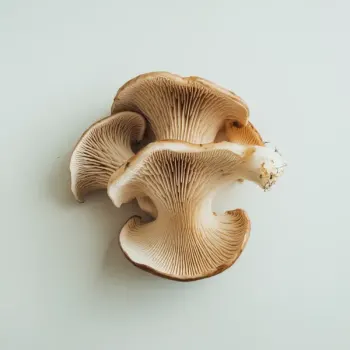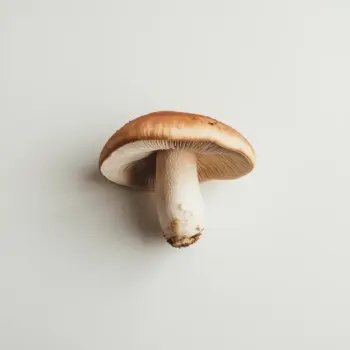Oyster Mushrooms vs Mushrooms are compared for culinary uses, highlighting Oyster Mushrooms' delicate texture and subtle flavor ideal for light sauces and quick cooking, versus Mushrooms' firmer texture and neutral taste suited for hearty dishes and longer simmering times.

Oyster mushrooms are a type of edible fungi known for their oyster-shaped cap and delicate texture. They have a mild flavor with a hint of sweetness and are used in a variety of dishes.

Mushrooms, in a broad sense, refer to a variety of fungi that are edible. The most common variety is the button mushroom, which has a mild taste and a firm texture, making them a versatile ingredient in many recipes.
Oyster mushrooms are known for their delicate, velvety texture and a subtle, anise-like flavor, while common mushrooms like button mushrooms have a firmer texture and a more neutral taste. Oyster mushrooms have gills that run down a stubby, sometimes nonexistent stem, whereas button mushrooms have a more distinct cap and stem structure. In terms of cultivation, oyster mushrooms often grow on decaying wood, while button mushrooms are typically grown in composted materials.

Your ultimate Recipe Box, Meal Planner, and Cooking Class all in one
In stir-fries, oyster mushrooms bring a tender texture and can absorb flavors well. They are excellent in Asian-inspired dishes, pairing beautifully with soy sauce, ginger, and garlic. When using oyster mushrooms, it's best to add them towards the end of cooking to maintain their delicate structure. Button mushrooms, when used in stir-fries, offer a meaty bite and hold up well to longer cooking times. They work well with robust flavors like Worcestershire sauce and black pepper. Slice them uniformly to ensure even cooking throughout the stir-fry process.
For soups and stews, oyster mushrooms contribute a silky texture and can become a focal point in broths and light soups. They pair well with ingredients like lemongrass and miso. Add them in the last few minutes of cooking to avoid them becoming too soft. Common mushrooms like cremini or portobello add depth to soups and stews. Their hearty texture means they can be simmered for extended periods, making them ideal for dishes like beef stew or creamy mushroom soup. They absorb and complement the flavors of herbs like thyme and rosemary.
In pasta dishes, oyster mushrooms offer a subtle flavor that won't overpower delicate sauces. They're particularly suited to light cream or wine-based sauces and can be a delicious topping for a mushroom fettuccine Alfredo. Button mushrooms are more commonly used in heartier pasta dishes such as spaghetti bolognese or a mushroom ragù. Their ability to soak up flavors makes them perfect for absorbing the rich tomato and herb-infused sauces.
Both oyster mushrooms and button mushrooms are low in calories and high in nutrients like B vitamins and minerals such as selenium.
| Nutrient | Mushrooms ( per 100 Grams ) | Oyster Mushrooms ( per 100 Grams ) |
|---|---|---|
| Fat | 0.3g | 0.4g |
| Fiber | 1g | 2g |
| Protein | 3g | 3g |
| Calories | 22 | 33 |
| Selenium | 9.3mcg | 2mcg |
| Carbohydrates | 3.3g | 6g |
Yes, oyster mushrooms can be eaten raw and are often used in salads for their delicate texture and flavor.
Oyster mushrooms should be gently wiped with a damp cloth or paper towel to remove any debris. They should not be soaked as they absorb water easily and can become soggy.
Oyster mushrooms are known for their potential health benefits, including being low in calories, high in protein, antioxidants, and containing various vitamins and minerals.
Oyster mushrooms should be stored in the refrigerator in a paper bag and can last up to a week. Make sure they are dry to prevent them from becoming slimy.
Yes, you can substitute oyster mushrooms for button mushrooms, but keep in mind that the texture and flavor will be different, with oyster mushrooms being more delicate and slightly sweeter.